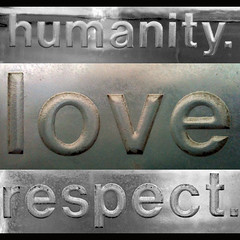In chapter three of Raised Right, Alisa Harris explores the confrontational approach to both politics and evangelism she was taught in her youth:
Like Socrates I was a gadfly – always provoking, stinging citizens out of complacency, and melodramatically drinking the hemlock they forced on me in punishment.
I remember this mentality growing up. The idea of remaining silent on any issue deemed important by certain Christian leaders was unthinkable. The evil of the day — abortion, homosexuality, moral relativism, and the New Age movement all had to be soundly and unequivocally renounced at every opportunity. (And sometimes, like Harris’s description of the county fair, it was up to us to create such an opportunity.)
And like Harris, I remember how those people who took issue with the heavy-handed tactics I learned were to be considered proof that I was doing the right thing. After all, the BIble said that those of us who followed Jesus were sure to offend people. So I had the perfect excuse to see reasonable criticism of my aggressive posture as mere rejection of the Truth I was proclaiming.[1] In effect, I was set up to be obnoxious and see myself as a martyr.
Harris goes on to talk about the Four Killer questions that one of her evangelism mentors taught her and her peers to use:
- What do you mean by that?
- How do you know what you are saying is true?
- What difference does it make in your life?
- What if you are wrong and you die?
These were not questions I was taught to use. I was taught standard arguments to use on different topics and techniques to force the conversation along a certain path. Both approaches are based on the idea that what the evangelistic or political target actually thinks or believes isn’t important as in forcing the conversation int he direction you want it to go.
Harris describes the superbly beautiful way in which the Four Killer Questions not only accomplish their goal, but make themselves the ultimate universal approach to winning any argument:
This approach didn’t require you to refute, or even know, the tenets of Marxism or socialism or secular humanism because you strictly limited your conversation to asking these four simple questions again and again. If the Marxist responded with the same questions, you shot back, “What kind of evidence would you accept as proof?” Since wed learned that his objections weren’t serious or even intellectually honest, that they were grounded in nothing but a stubborn blindness to truth, the Marxist could give just one honest answer: “None.”
Of course, anyone who has been on the receiving end of the Four Killer Questions[2] or similar debate tactics could tell you, the most likely reaction to being thus heckled[3] is frustration, anger, and returned hostility rather than conversion. In addition to the promise of “martyrdom for truth,” Harris’s mentors offered the perfect way to assuage any concerns about the ineffectiveness of the approach:
The Four Killer Questions brought the godless to Christ – later. Those Four Killer Questions would gnaw away at the girl from Planned Parenthood or the guy with the dreads, eroding their faith in their worldview until someone else dropped along with the gospel message…
This is a convenient out, as it allows the person to imagine the “effectiveness” of their obnoxious behavior appearing out of their own sight, beyond their ability to objectively – or even subjectively – measure them. In a way, it creates a fantasy where one’s “evangelistic efforts” are completely detached from not only the people being evangelized, but from any sort of results.
I’ve occasionally commented on the Former Conservative’s posts criticizing some evangelists’ approaches pointing out that “saving souls” is not nearly as important as “preaching the message” and that to such people, “evangelism” is an act of piety rather than an honest attempt at persuasion. I think that in this chapter, Harris demonstrates not only the truth of that statement, but the ways in which such evangelicals rationalize the transition from the latter intuit the former, or at least the conflation of the two.
Notes:
[1] In fairness, some evangelicals do try to combat this notion. For example, in college, the volunteer staffworker that InterVarsity Christian Fellowship assigned to my campus’s chapter often said, “The Bible may offend some, but that’s no excuse for presenting its message offensively.” This isn’t to say her presentation of Biblical truth was always the best it could be, but at least she tried to make it clear that “being as harsh as possible as long as you’re convinced you’re right” was not an acceptable approach.
[2] Harris provides a perfect anecdote that shows what I imagine would be a fairly typical reaction.
[3] I think this is a far proper term to describe the intent and effects of this approach rather than “challenged” or “debated.” Both of those terms suggest actual engagement with the substance of one’s positions.













